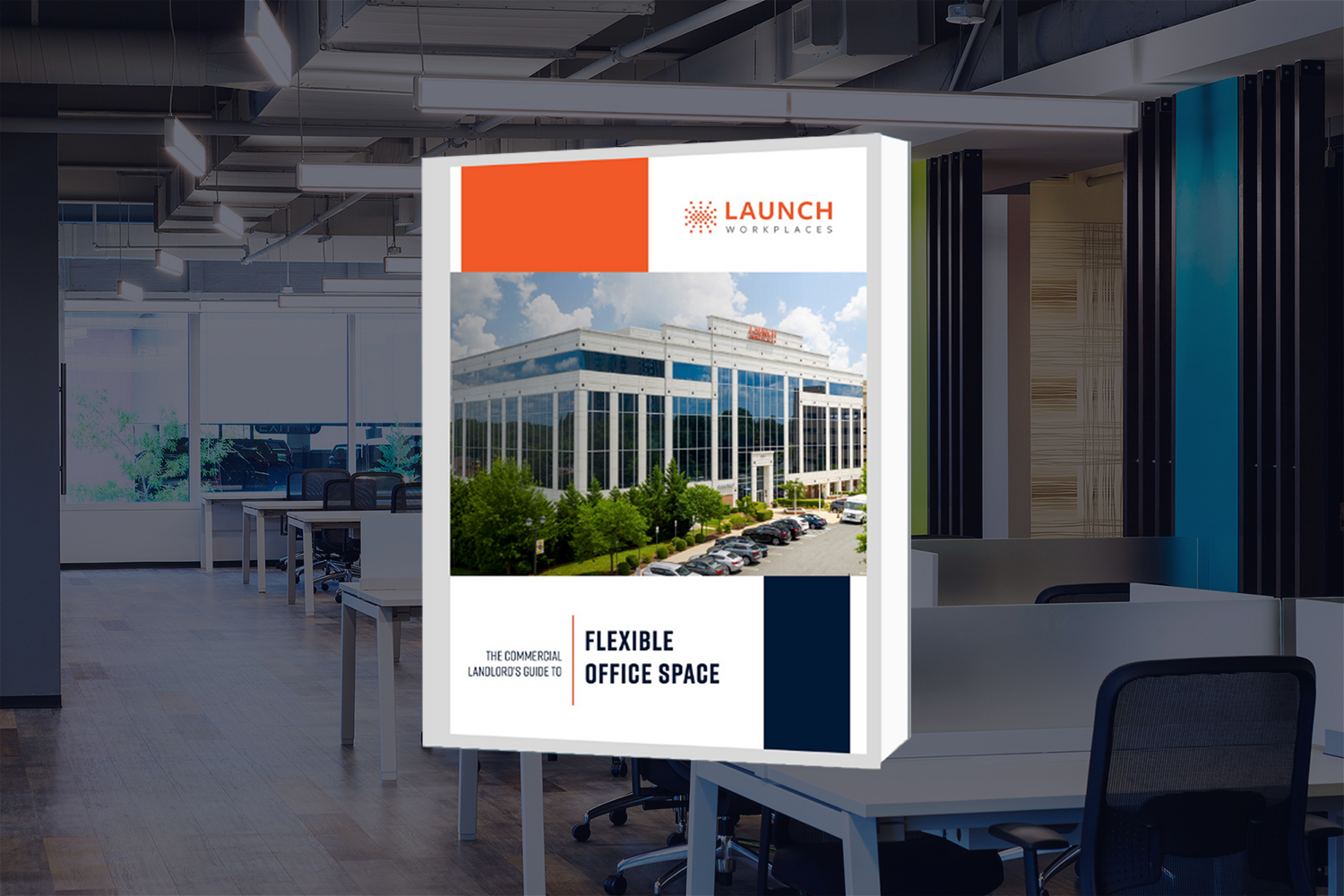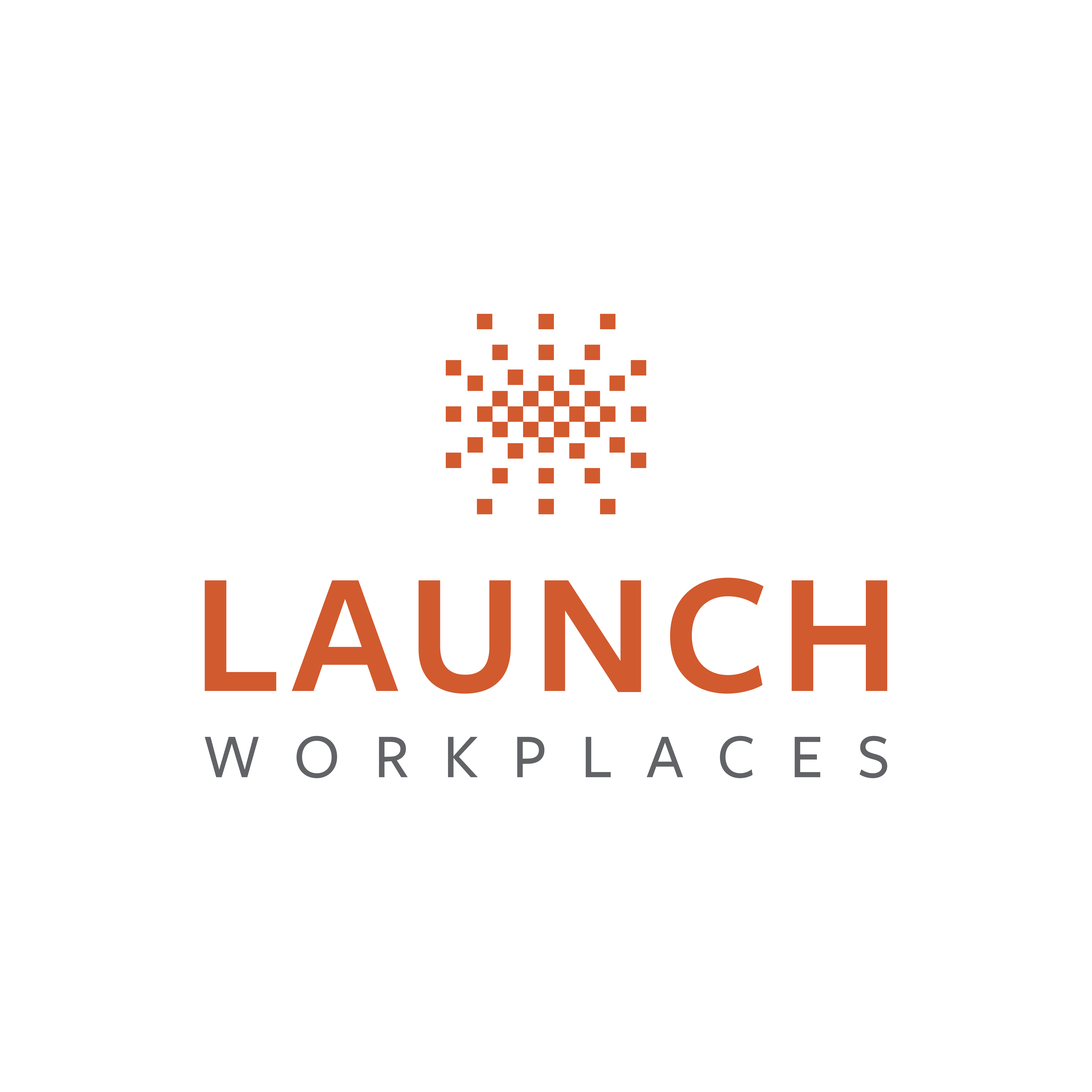Highly profitable multi-location coworking spaces are the exception — not the rule.
But with five established spaces and a sixth on the way, Launch Workplaces has become one of those exceptions. We’ve perfected a formula for transforming commercial real estate properties into money-making professional communities that generate real ROI for landlords.
We founded Launch Workplaces as a way to solve our own commercial real estate problems before we ever used our formula to help maximize revenues for other commercial real estate owners. Profit and reduced risk, therefore, had to be built into the equation from the start.
Now, we’re sharing our story to show commercial landlords why flexible office space has such great potential, how we were able to make it work for us, and how they can find success in it.
Let’s go back to the beginning.
The inadvertent start of a multi-location coworking business
Unlike many coworking businesses, we didn’t intend to be a coworking business in the way we are today. We started out as a 128-year old commercial real estate company seeking a solution to our own industry-based issues.
As a privately held commercial real estate company, we were constantly faced with the challenges of competing with institutional commercial real estate giants and their seemingly bottomless bankrolls.
For one, economies of scale allowed our institutional counterparts in Washington, DC and Baltimore, MD to undercut our lease pricing in order to secure tenants.
And at the same time, we were getting frustrated with making massive lump-sum commission payments to commercial real estate brokers for negotiating against us in favor of tenants—with no accountability for whether the tenants ever saw out the duration of their lease.
As a result, we realized that moving outside of the major city centers and into Maryland’s secondary markets offered us the opportunity to connect with a new demographic.
A new way of approaching commercial real estate tenancy
Once we had transitioned our business into buildings in these new markets, we found ourselves with some large-scale vacancies that just weren’t moving.
We recognized that, while 10,000 square foot tenants were big fish, they were also harder to catch. They had ample options available to them, and institutional real estate companies could offer them better lease prices than we could. Most of all, there were simply less of them around.
This challenge was the first spark for the idea of creating flexible office space.
We began changing our perspective on large floor plans. Instead of seeing one 10,000 square foot space, we started seeing ten 100 square foot floor plans.
And we decided to aggregate all those offices in one spot. In doing so, we could stop competing for big tenants and would save ourselves a fortune in commission fees being paid out to brokers.
Our journey into coworking started that simply.
Learning through trial and error
Without a roadmap to follow, our first foray into coworking entailed a lot of trial and error.
When we started in 2014, there was no science to our approach. We had one single space, two-thirds built out with private offices and the rest in an open floor plan with cubicles.
At that point, we didn’t know what we didn’t know. So, we simply got started.
We repainted the offices. We took the cubicles out of the rest of the space and replaced them with traditional “coworking furniture.” We changed the flooring from the old, IBM-style broadloom and put in some hardwood. We took the drop ceilings out to make it more airy and sunny.
We spent about fifty dollars per square foot to just see what would happen. And that’s when the education started.
We learned that…
Pricing flexible office space requires strategy
In the beginning, we had a consultant trying to help us determine pricing. As a real estate professional, he’d never built a coworking facility either. We simply went off his gut instinct of what the pricing should be.
The problem? The pricing model seemed astronomical.
Instead, we started working in reverse. We began looking at the cost per square foot required to operate the facility and the profit margin we wanted to make. We decided to first look at the return we wanted to make and then priced our spaces accordingly.
We also opted to prioritize getting our space full by offering attractive pricing rather than charging a premium. Start low, build a waitlist, and when a tenant leaves, the price increases to where we needed it to be. Supply and demand.
This process blossomed into years of developing algorithms, ratios, and efficiencies that now allow us to easily determine pricing for our spaces.
Picking furnishings is a nightmare
With our first space, we had no idea how to pick furnishings for a coworking space. That standard “coworking furniture” we mentioned? Disastrous. It’s immobile, it’s undynamic, it’s big. We started with 30” by 60” desks as our standard sizing. It was much more than was necessary.
In the history of Launch Workplaces, that was our most expensive lesson.
It’s critical to offer value where others don’t
When we got started, our priority was to find ways to offer value for businesses that they couldn’t get elsewhere.
We met with the county, economic development groups, and incubators to identify gaps in the market. And it quickly became clear that nobody was providing access to any real professional resources.
So, we asked our members what they’d find valuable and we provided it to them — from expert lunch-and-learns with 15 minute one-on-one meetings to social events and professional networking opportunities.
And that became one of our most important differentiators in the Maryland coworking industry.
Adaptability is the key to success
One of the biggest lessons we learned in getting started with our first space was that being adaptable was the best way to learn and improve.
Rather than spending a million dollars on our first space, we started with smaller improvements.
Instead of a gut job and full build-out, we made small tweaks first, figured out what worked and what didn’t, and kept the bandwidth to make changes as needed.
And with that knowledge, we were able to plan more efficiently and effectively for the future.
Transforming more of our buildings into flexible office spaces
With one successful space up and running, we realized that this was a model we could apply to more of our commercial real estate properties—and that’s what we did.
And we began receiving requests from fellow commercial real estate companies asking about the Launch model and requesting tours of the space.
That’s when it dawned on us that there was a market for this. While we’d never thought to sell this concept, it started seeming like the obvious next step.
But unlike other multi-location coworking businesses — the ones that lease space at Price A and then sublet the space to its tenants at Price B for a profit of C — we saw value in empowering building owners to activate their entire buildings.
So, what began as an undertaking to fill our own needs became an opportunity to help business owners build profitable professional communities within their properties.
Identifying a formula for success
We created a system that weighed and measured properties and landlords based on a 61-point analysis.
Eventually, we realized that it was more effective to have twelve data points and refined them accordingly.
Today, that system is called Value Nav — our proprietary software that allows us to analyze the potential success of a property in a matter of minutes.
Launch Workplaces will only activate buildings where it will be profitable for landlords and worth our time and resources.
How Launch Workplaces has changed coworking in Maryland
Launch Workplaces has changed the coworking industry in Maryland.
We’ve saved hundreds of thousands of dollars in commissions and build-outs, expanded to six locations, and organically grown seven of our own tenants into our other, larger commercial real estate properties.
We didn’t set out to be a multi-location coworking company. We set out to be a company that used coworking as a better way to fill our own spaces. And that’s exactly why we’ve achieved success in this business.
We went through the learning curves, the ups and downs, and the creation of a successful turnkey coworking model so that we can provide landlords with a proven, profitable formula for success and spare them the hard — and expensive — lessons we learned along the way.
To learn more about Launch Management Methodology and how you can benefit from activating your building, get in touch with us.




